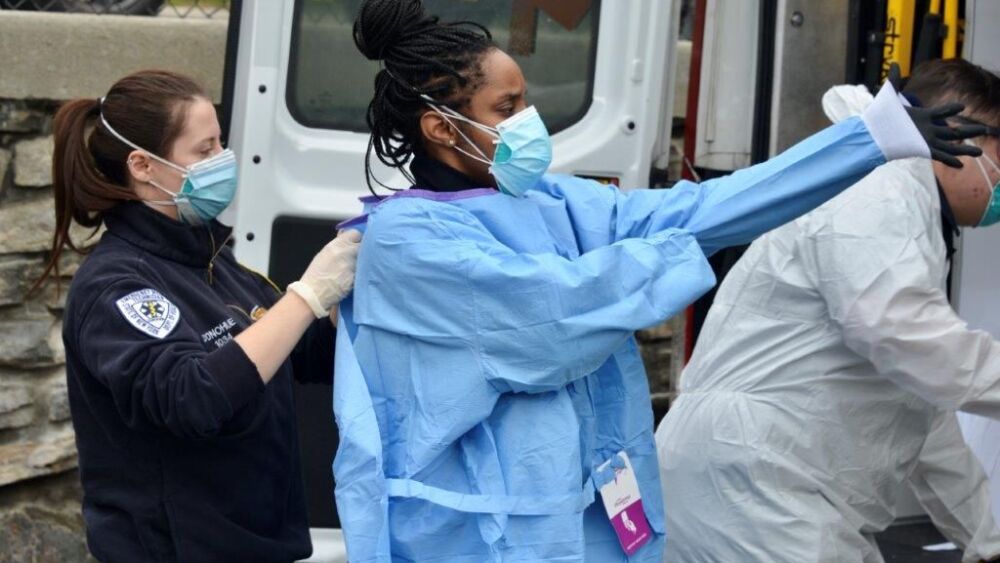It is EMS Week, the annual recognition of the incredible people who serve their communities as medical first responders, EMTs and paramedics. The banquets, awards, T-shirts and proclamations are well-earned, especially in the ongoing pandemic and public health emergency.
EMS Week is also an opportunity for reflection on our history and discussion of what the future of the profession should be. One EMS week constant is a desire to evolve from our current state to something better, which usually includes increased recognition, higher pay and better working conditions. EMS Week social media discussions remind me of the protest chant:
“What do we want?”
“CHANGE!”
“When do we want it?”
“NOW!”
I have been in EMS for more than 20 years as a field provider, educator and advocate. The reality of change in EMS hasn’t been sudden, but the change that author Kate Fox describes as the “truly English protest march.” Fox’s adaption of the protest chant is,
“What do we want?”
“GRADUAL CHANGE!”
“When do we want it?”
“IN DUE COURSE!”
Over the span of my personal history in EMS, we have seen many significant gradual changes, made in due course, that are transforming and improving the profession for providers, patients and communities. Here are some of the gradual changes during my EMS career.
-
Evidence-based medicine. EMS patient care protocols are significantly better informed by research, including a growing body of prehospital research, than they were two decades ago. For example, the indications and uses for longboards have changed from “every trauma patient” to “lifting or transfer device.” Tourniquets were old medicine at the start of my EMS career. Now tourniquets are the centerpiece of layperson and EMS provider care for significant, extremity bleeding. The protocols of the future will be written by data rich, EMS-experienced PhDs.
-
ALS becomes BLS. The milestones in the history of EMS can be measured by the transition of an intervention from ALS to BLS to laypeople. At the beginning of my EMS career, we were just beginning to teach AED skills to first responders and laypeople, a change that has saved countless lives. Naloxone administration for opioid overdose, oral glucose and glucagon, and epinephrine for anaphylaxis have moved gradually moved from the domain of ALS providers to widespread authorization for BLS providers and laypeople.
-
Community paramedic. I am pretty sure the term “community paramedic” only existed as an idea 20 years ago. It certainly wasn’t the name of a unique job performed by a specially trained paramedic. The growth of community paramedicine, as well as the research on patient outcomes and cost savings, has set the stage for EMS agencies to partner with other healthcare organizations to implement telemedicine and treatment in place programs that are eligible for reimbursement from payors.
-
Unified advocacy for EMS. At the turn of the century, the national organizations representing EMTs and paramedics affiliated with fire departments, private services, hospitals, third services and other models didn’t seem to talk to one another much, let alone work towards common goals to move the profession forward. Gradually, with a few lurching steps forward, our national organizations – NAEMT, AAA, NEMSMA, IAFC, IAFF and IAEMSC – now collaborate and partner with one another, instead of competing for recognition and limited resources. We are stronger, more appreciated and better funded when we advocate for EMS together.
-
Recognize the impact of EMS work. We’ve always known that an EMS career can be physically, emotionally and mentally exhausting, but we haven’t always been good about acknowledging, preventing and treating the impacts of EMS work. Today, primarily through grassroots efforts, like The Code Green Campaign, there are more resources and programs available to prevent and treat traumatic stress and burnout. Leaders and employers are paying better attention to the impact of EMS on the work force. We need to continue to advocate for improved working conditions, health and wellness resources as a standard benefit and culture change that both recognizes it is “OK to be OK” and “OK to not be OK.”
-
EMS as a career field. My enduring encouragement for every EMS provider is to earn an associate’s degree or bachelor’s degree. If you had a degree before you entered the profession, outstanding! If you don’t have a degree, there will never be an easy time to go back to school, so get started as soon as you can. As opportunities in the career field continue to expand, a degree will be important for promotion opportunities in management or education, as well as the new roles, such as treatment in place, that EMS is expanding into. If you leave EMS, by choice or need, a college degree unlocks a lot of career options.
EMS Week 2041
The gradual changes made in due course that will be noteworthy and important during EMS Week 2041 are being innovated, tested, improved and distributed today by dedicated EMS professionals like you. As you consider, “What do I want for EMS?” be specific in the change you’d like to see. Then look for opportunities to make that change happen. Our profession is wide open for dreamers and disrupters.
Happy EMS Week and thanks for caring for your community.
Next step
Increase EMS funding in three clicks
Ask your senators and representative to make Treatment in Place permanent, increase SIREN Act funding, count every EMS provider and extend Medicare add-ons














